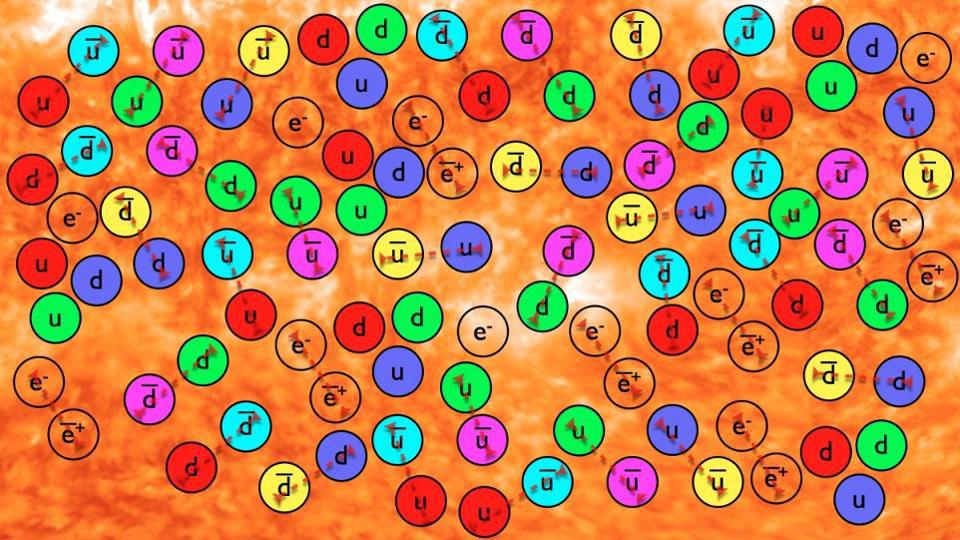Daniel Okrent is a veteran journalist and editor who has worked for a wide variety of magazines and newspapers. From October, 2003 until May, 2005, following the Jayson Blair scandal,[…]
Sign up for the Smarter Faster newsletter
A weekly newsletter featuring the biggest ideas from the smartest people
There will always be plagiarists and reporters who didn’t make the phone call they claimed to have made. But an ombudsman can make the difference in preventing chronic lapses of journalistic ethics.
Question: How can journalism organizations prevent rnJayson Blair-style scandals?
rn
rnDaniel Okrent: You know, I think that there will always be small rnscale scandals. There will always be plagiarists. There will always bern people who didn’t make the phone call they claimed to have made, but rnthe chronic repeated abuse that Jayson Blair was engaged in, I don’t rnthink could happen at a newspaper that has a public editor, or rnombudsman.
rnYes, there was a phone number published in the newspaper in The Times rnevery day for people to call if they had something that they objected rnto. And when I got there, I thought I’d try out the system. Well, it rnsaid mailbox full. Nobody had been paying attention to it. If you havern somebody whose job it is specifically to respond to readers who are rncomplaining or are pointing out error, or pointing out misbehavior on rnthe part of reporters, it’s very hard... I can’t imagine that it would rnnot be caught after the second or third time because somebody’s reading rnthat mail. Somebody’s paying attention to it.
rnQuestion: What ethical issues do today's journalists face that rnprevious generations didn't?
rn
Daniel Okrent: My biggest concern about the digital rntechnology as it’s coming to the newsroom is it’s anonymity of writers; rnwhether that’s the person who’s writing a blog, or who’s commenting on arn signed blog. We don’t know who those people are. And one thing, and rnthis is not an ethical issue, this is a question of civility and taste. rn I mean, it allows cowards to hide behind that scrim while they have thern freedom to say really awful and disgusting things. And I can’t stand rnthat. It’s very upsetting to me.
But beyond that, there have rnbeen a few instances where that person whose been commenting on this Webrn site or that Web site, in fact is a principal in the story, is in fact arn figure who has a self-interest, but is hiding that self-interest. I rnwould really be delighted to see the Web sites of the world just rnsuddenly declare, put on your real name or we don’t care what you have rnto say. And in fact, I don’t care what you... you shouldn’t care what Irn have to say unless I’m willing to put my name behind it.
rn Question: Were journalistic standards better in the rnpast?
rn
rnDaniel Okrent: I think that the peak years for quality journalismrn in this country were 1970’s and early 1980’s. If you go back before rnthen, I mean, pickup a copy of the New York Times in 1965 some day. It rnwas unbelievably dull. It was official-ese. If the new Peruvian rnAmbassador appointed, there it was in the paper, the shipping news, justrn the sort of the kind of deadly required drone of news in those days wasrn really pretty awful. The paper got much, much better after that as didrn all of American journalism. And I think that Watergate, obviously, hadrn a great deal to do with that. Watergate and also the magazine writers rnof the ‘60’s, the people like Gay Talese and David Halberstam who both rncame out of The Times, but then moved to other arenas to be able to do rnmore than simply chronicle. They could write. They did more.
Comingrn together, that and the great victory for journalism that was Watergate rncreated a, I think in the ‘70’s attracted better people to the industry,rn it was a more exciting thing to do and people did their greatest work rnthen. And the standards were very, very high. As we get into the rn‘90’s, and we begin to have economic trouble begin to show up, Time rnMagazine, where I worked for quite a while, in 1990 had eight full-time rncritics on staff doing different things. Today, I think there’s one rnfull-time critic and that’s not that criticism is not the most importantrn thing in the world, but I use it as an indication of how things have rnshrunk back because of the economic problems.
Recorded on: April 16, 2010
rn
rnDaniel Okrent: You know, I think that there will always be small rnscale scandals. There will always be plagiarists. There will always bern people who didn’t make the phone call they claimed to have made, but rnthe chronic repeated abuse that Jayson Blair was engaged in, I don’t rnthink could happen at a newspaper that has a public editor, or rnombudsman.
rnYes, there was a phone number published in the newspaper in The Times rnevery day for people to call if they had something that they objected rnto. And when I got there, I thought I’d try out the system. Well, it rnsaid mailbox full. Nobody had been paying attention to it. If you havern somebody whose job it is specifically to respond to readers who are rncomplaining or are pointing out error, or pointing out misbehavior on rnthe part of reporters, it’s very hard... I can’t imagine that it would rnnot be caught after the second or third time because somebody’s reading rnthat mail. Somebody’s paying attention to it.
rnQuestion: What ethical issues do today's journalists face that rnprevious generations didn't?
rn
Daniel Okrent: My biggest concern about the digital rntechnology as it’s coming to the newsroom is it’s anonymity of writers; rnwhether that’s the person who’s writing a blog, or who’s commenting on arn signed blog. We don’t know who those people are. And one thing, and rnthis is not an ethical issue, this is a question of civility and taste. rn I mean, it allows cowards to hide behind that scrim while they have thern freedom to say really awful and disgusting things. And I can’t stand rnthat. It’s very upsetting to me.
But beyond that, there have rnbeen a few instances where that person whose been commenting on this Webrn site or that Web site, in fact is a principal in the story, is in fact arn figure who has a self-interest, but is hiding that self-interest. I rnwould really be delighted to see the Web sites of the world just rnsuddenly declare, put on your real name or we don’t care what you have rnto say. And in fact, I don’t care what you... you shouldn’t care what Irn have to say unless I’m willing to put my name behind it.
rn Question: Were journalistic standards better in the rnpast?
rn
rnDaniel Okrent: I think that the peak years for quality journalismrn in this country were 1970’s and early 1980’s. If you go back before rnthen, I mean, pickup a copy of the New York Times in 1965 some day. It rnwas unbelievably dull. It was official-ese. If the new Peruvian rnAmbassador appointed, there it was in the paper, the shipping news, justrn the sort of the kind of deadly required drone of news in those days wasrn really pretty awful. The paper got much, much better after that as didrn all of American journalism. And I think that Watergate, obviously, hadrn a great deal to do with that. Watergate and also the magazine writers rnof the ‘60’s, the people like Gay Talese and David Halberstam who both rncame out of The Times, but then moved to other arenas to be able to do rnmore than simply chronicle. They could write. They did more.
Comingrn together, that and the great victory for journalism that was Watergate rncreated a, I think in the ‘70’s attracted better people to the industry,rn it was a more exciting thing to do and people did their greatest work rnthen. And the standards were very, very high. As we get into the rn‘90’s, and we begin to have economic trouble begin to show up, Time rnMagazine, where I worked for quite a while, in 1990 had eight full-time rncritics on staff doing different things. Today, I think there’s one rnfull-time critic and that’s not that criticism is not the most importantrn thing in the world, but I use it as an indication of how things have rnshrunk back because of the economic problems.
Recorded on: April 16, 2010
▸
9 min
—
with





